Kosher vegetable glycerin is an effective method for extracting cannabis concentrates directly from the plant material and produces a tasty medication that is easily ingested directly orally, or mixed with drinks and food.
Glycerin is a heavy, syrupy clear liquid sugar alcohol that has approximately 60% of the sweetness of sucrose, and about the same food value.
It is however not actually a true sugar and is often used as a sugar substitute, as diabetics are often able to use it without experienced the blood sugar rollercoaster they suffer with sucrose or other sugars.
Glycerin makes an extremely tasty and provocative cannabis tincture, that when made using cold extraction methods, is reminiscent of wild honey, as it preserves all the individual flavors, so that they dart off in all directions simultaneously.
Hot glycerin extraction also makes a tasty tincture, with the flavor more resembling a fine soup, where the individual flavors are married into one overall flavor. While not as whimsical and provocative as a cold extraction, it can be prepared start to finish in a couple days, where cold extractions take a minimum of 60 days and are commonly soaked for 120 days or longer.
Many of the provocative flavors and odors from cannabis are aromatic terpenes, and the reason that they are aromatic in the first place, is that they give off molecules at room temperature.
Heating speeds up the rate that the accompanying terpenoids and other aromatics are vaporized off, so many are collateral damage in a hot extraction and are lost.
The glycerin molecule is actually only a three carbon molecule chain, with three hydroxyl groups (OH) attached, and as hydroxyl groups are hydrophilic, glycerin is hygroscopic (absorbs water) and dissolves readily (miscible) in water.
It has a flash point of approximately 177C (351F), and a boiling point of 290 °C (554°F).
It is relatively non toxic. The MSDS tells us that the LD50 Oral rat dosage is 12,600 milligrams per kilogram of body weight, which is approximately 5.7 grams per pound of body weight, or 36 ounces for a 180 pound male.
By comparison, acute oral toxicity (LD50) Oral Rat for sucrose sugar is 29700 mg/kg and about 7060 mg/kg for ethyl (grain) alcohol.
At saturation, Glycerin only hold as 33% as much cannabis oil as the same volume of ethyl (grain) alcohol, so about three times more is required per dose.
To reach maximum saturation however, requires processing more than one batch of fresh material through the glycerin, because as the saturation level increases, the glycerin becomes less aggressive as a solvent and the partially dissolved cannabis boundary layer interface with the solvent is also no longer at full strength and as reactive.
To keep the reaction from slowing to a snails pace, or even stopping, some method must be used to keep removing this stagnant layer and refreshing the boundary between the solvent and resin.
In addition, heat dramatically affects resin dissolution rates. The hotter it is, the faster it works, up to the point of overheating.
As glycerin is usually used as an oral med, we also need to consider decarboxylating the cannabinoids so that they are orally active.
If not in excess, some water solubles add to the flavor of a glycerin tincture, and taking all of the water out of the material before processing it, makes it frangible and prone to breaking into small fragments that may be hard to remove.
Let's look at how these four variables can be manipulated to produce delicious and effective glycerin tinctures.
Drying and decarboxylation:
Plant material is typically dried to around 10/15% water content by weight for smoking and vaporizing purposes, which is low enough to make some delicious glycerin, but for those who prefer less water solubles in their glycerin tincture or wish to decarboxylate the material before extracting, you may add a drying and/or decarboxylation step.
To simply remove most of the remaining moisture, I place the plant material on a cookie sheet in a 200F oven and turn it, until it is frangible when I roll it between my finger and thumb.
At that point it is ready for extraction, but if you also wish to decarboxylate the plant material before making your tincture, you can then crank up the oven to 250F and after it stabilizes at the higher temperature, replace the plant material in the oven and hold it at temperature for approximately 30 minutes.
That will add a roasted flavor to the tincture and many of the turpenoids will be lost, but it will decarboxylate approximately 70% of the existing carboxylic acids into their non acid orally active form.
An alternative to decarboxylating the material ahead of time, is to do it after the extraction is complete and the plant material has been filtered out. That eliminates the roasted flavor and preserves more of the turpennoids.
Using Temperature:
Elevating the temperature of the glycerin increases the rate of dissolution of the resins, especially if you raise the temperature high enough for the resins to be molten. THC, CBD and CBN are all molten at just under 180F, so we operate at that temperature.
The advantage of using as low a temperature as possible, is that fewer aromatic terpenoids are boiled off at that low a temperature, and it decarboxylates more slowly, so that the process doesn't pass the peak of the decarboxylation curve and start down the other side toward low THC and high CBN. As previously noted, we can finish the decarboxylation later.
Keeping the boundary layer removed:
The boundary layer is the layer of partially reacted resin and dilute solvent that forms on the surface of the resin after the initial aggressive dissolution by the solvent. The solvent at that point is dilute, as is the resin concentration, so that the reaction slows or grinds to a halt.
To keep the reaction operating at a reasonable rate, we need to periodically or continuously remove that boundary layer, and there are four methods that I will present here.
The first is to stir. Simply stir gently and thoroughly with a wooden spoon.
The second is to shake. Simply shake a jar of glycerin and plant material by hand regularly. A paint shaker would also work for this application.
The third is to tumble. Placing the jar of glycerin and plant material in a rock or photo film tumbler will keep the boundaries fresh. It is an effective and gentle way to speed up the process.
The forth is vibration. Placing jar of glycerin and plant material in a vibratory cartridge case cleaner, or other form of vibration, creates more shear energy that tumbling and will dissolve the material the fastest of any method we have tried thus far.
Material selection and preparation for hot or cold processing:
While glycerin tincture can be made from anything from prime bud to stems, it is tastiest done from prime bud and least tasty with the stems. I usually make glycerin tincture out of the sweet trim removed from the buds during manicuring and popcorn buds.
It is not necessary to grind up the material, only to break it up any buds so that the material is loose enough for the glycerin to reach all the surfaces. Excessive pulverization of the material will result in color and particulate pickup that is difficult to remove. If you leave some surfaces blinded however, the resins on those surfaces won't be removed either.
Extracting using the cold process:
The cold process is the easiest and tastiest way to make glycerin tincture. We extract using the cold process, simply by soaking the plant material in glycerin at ambient temperatures and agitating it for sixty days or more. Sixty days is about the least amount of time for a cold extraction, and typically they are run 90 to over 120 days. I have one experiment with more than 365 days of soak time.
After the extended soak and agitation, the glycerin is poured off and pressed out of the plant material to yield quality and tasty tinctures. It can also be used with fresh material for another cycle, so as to build up more potency.
There are a number of ways to press out the glycerin from the plant material, and it applies to both cold and hot extraction, so I will cover that in a separate discussion at the end of extraction methods.
The way that we make cold process glycerin tincture, is to load a canning jar 2/3'ds full of plant material, lightly compacted and then cover with glycerin while stirring with a wooden spoon, until every surface is well coated and mixture is homogenous, and then add another inch of glycerin on top.
We place the jars in a cool dark place or cover to exclude light. We sometimes wrap jars with aluminum foil to exclude light.
Every day for the soak period days, we periodically agitate the jars, using one of the above methods and at the end I filter out the plant material for a a light golden to dark amber glycerin tincture, that is tasty and of high quality.
Because the aromatic terpenoids are preserved, it will have many flavors present, interacting and darting off in all directions simultaneously.
You can more easily filter the mixture if you warm it up to 150F or so before filtering.
Potency and gleaning:
As previously noted, to reach maximum saturation, requires processing more than one batch of fresh material through the glycerin, because as the saturation level increases, the glycerin becomes less aggressive as a solvent and the remaining partially dissolved cannabis is also no longer at full strength and as reactive.
In point of fact, the fresh pressed material from the above first cycle will still contain significant cannabinoids, which takes two to three cycles to get it all.
What we do is put the fresh pressed plant material back in the jar and refill with fresh glycerin and add fresh material to the freshly pressed glycerin for another cycle, if I desire more strength.
The fresh glycerin will do the best job of scavenging the remaining cannabinoids, and then can be used again with fresh material to further build up its potency. It is by this cascading technique, that we can leave little behind and yet still maintain quality and potency.
I should note that the most potent glycerin tincture is not necessarily the most tasty, and one cycle produces effective meds, so most of the time we do not bother to bump up the potency with cold tincture.
Hot glycerin extraction:
We prepare plant material and extract cannabis by the hot glycerin extraction process in much the same way as we do by the cold process, though we stir it instead of shaking, tumbling, or vibrating it.
We also use a thermal cycling process and stir regularly, rather than an extended cook as many processes call for. The expansion and contraction of the thermal cycling help break up the resins so that they dissolve more readily.
As with cold tincture, we load a canning jar 2/3'ds full of plant material, lightly compacted and then cover with glycerin while stirring with a wooden spoon, until every surface is well coated and mixture is homogenous, and then add another inch of glycerin on top.
We then set that jar in an electric fondue pot full of hot Canola oil at 200F, and stir it regularly with a wooden spoon until the mixture reaches 180F, and then we adjust the pot temperature controls to maintain 180F.
We stir the mixture regularly with a wooden spoon, for another thirty minutes, and then take it out of the hot oil and allow it to cool to ambient temperature.
For what it's worth, we use a wooden spoon, because a light tink with a metal spoon against a hot glass jar while stirring, can break it and dump the whole mixture into the hot oil.
After the mixture has cooled to room temperature, we again place into 200F oil and bring it back up to 180F while stirring regularly. When it reaches 180F, after a through stir, we take it out of the hot oil and let it cool to ambient temperature again.
We repeat the last step about five more times and after the last cook and stir; we filter out the plant material while the mixture is still hot. 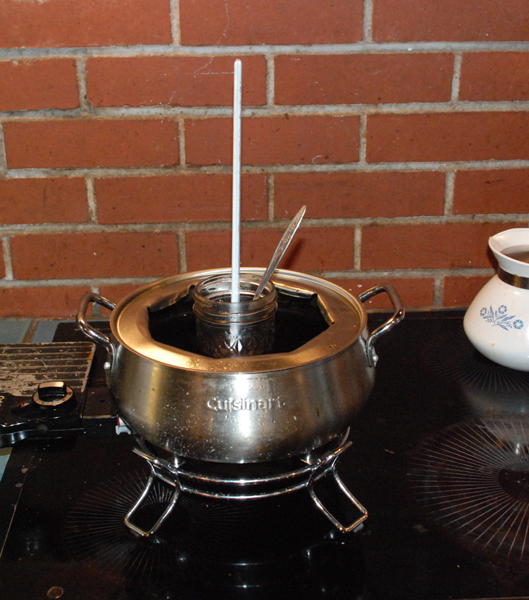
Filtering glycerin tincture:
Vegetable glycerin is thick and syrupy, so it doesn't filter quickly or easily without mechanical help. The simplest way to filter it is to heat it up so that it isn't so viscous, and pour it into a jelly bag, which you wring out by hand. That works, but leaves a lot of glycerin behind and you are limited to temperatures that you can handle with your hands.
A French coffee press, a potato ricer, or a jelly press can also work, and you can buy tincture presses used by the botanical extraction industry.
We made my own press, using a hydraulic bottle jack inside a scrap metal frame, which presses a filter bag between two stainless dog dishes, at a force of 12,000 psi, and catches the glycerin in a third stainless dog dish.
It presses the plant material into a hard little puck, that we have to break up to reprocess.
Flavoring glycerin tincture:
A well made glycerin tincture is a taste delight in its own right, but for those of ya'll who just like to play, here is how we've flavored glycerin that I had already infused with cannabis oil.
We started by adding equal parts of Bing Cherry and Blueberry raisins in a blender with enough 190 proof grain alcohol to make a soupy paste when macerated by the blender.
We tossed in half as much Japanese Gari and a dash of Almond extract, added another half a cup of 190 proof, and let it blend well.
When pureed, we poured it into a stainless mixing cup and placed it in a 180F hot oil bath. We cooked and stirred it until all the alcohol was gone, and then removed it to cool.
We then put about two tablespoons of that concentrate into each 1/2 pint of infused glycerin to be flavored and place it in the 180F oil to cook for thirty minutes while stirring regularly.
At that point we remove it from the oil, filter out the concentrate using a filter bag and the glycerin press. The glycerin is delightfully flavored, and the chef gets to eat the concentrate from the filter bag! Ahwooooooooooooooooooooooooooooooo!!!!!!!!!! Hee, hee, hee....................
Above
Hot soak for one week; Hot cycle 7 times;Cold vibrate; Hot cycle and vibrate 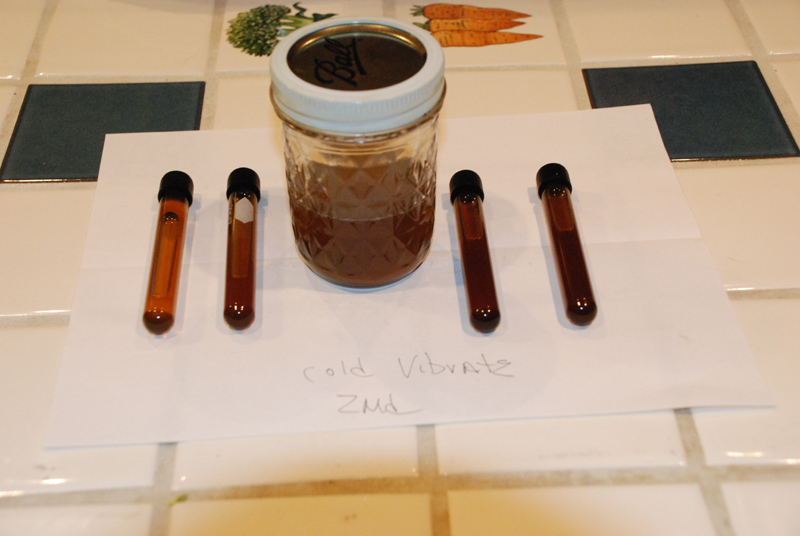
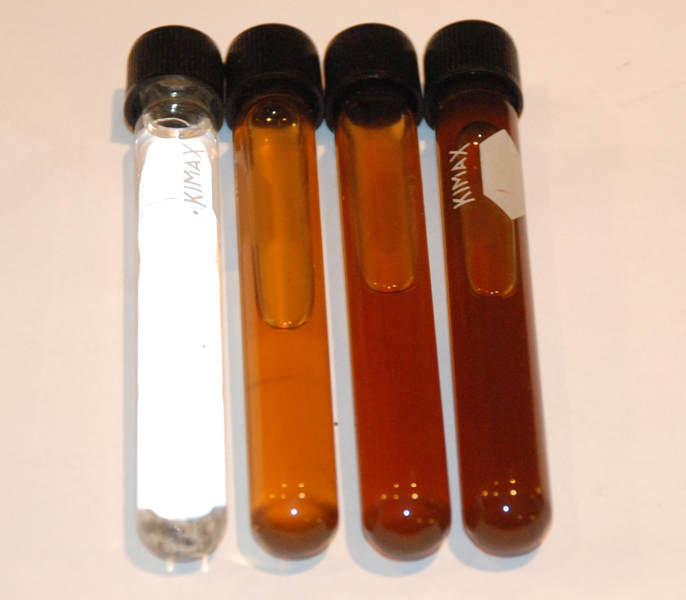 Cold Vibrate Density samples
Cold Vibrate Density samples 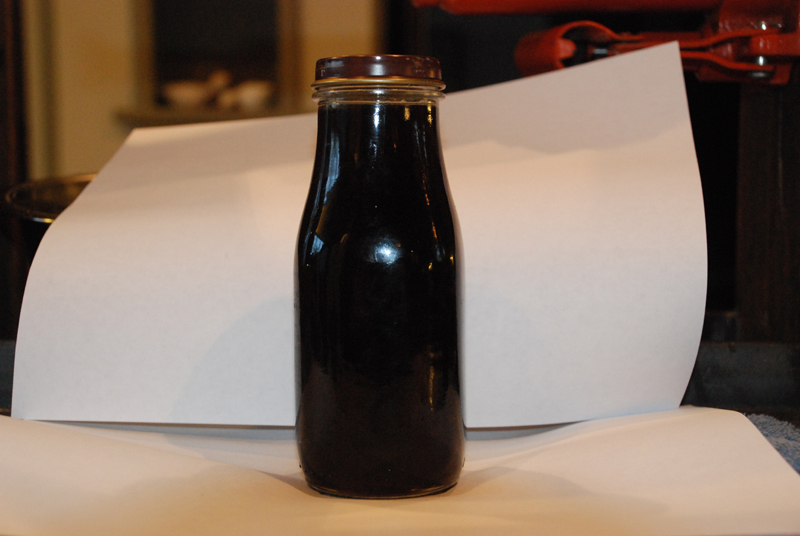
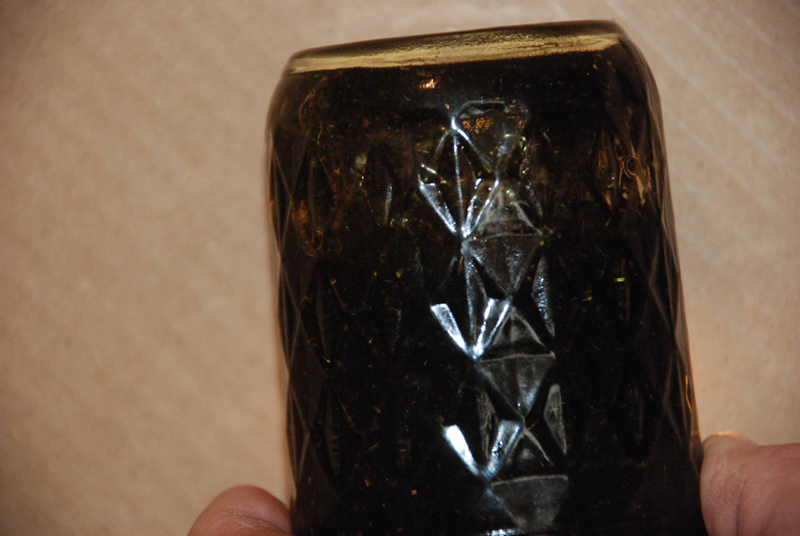 Second pressing of material 160F cycled 7 times
Second pressing of material 160F cycled 7 times 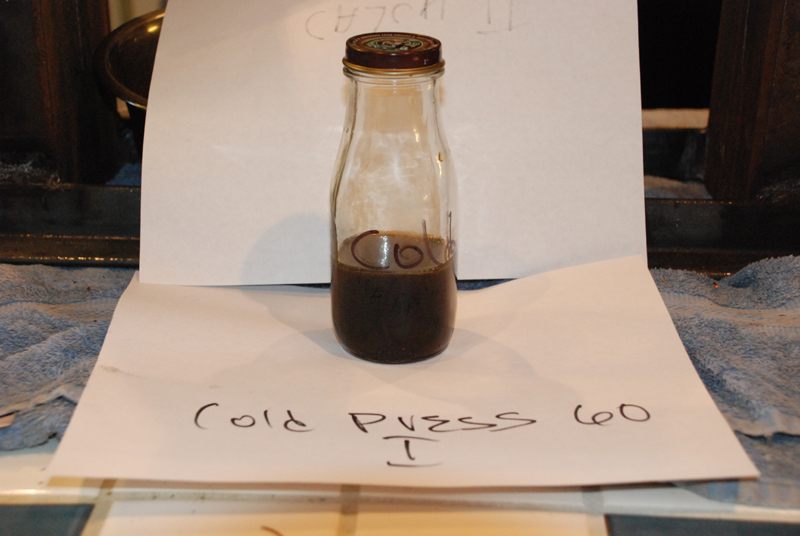
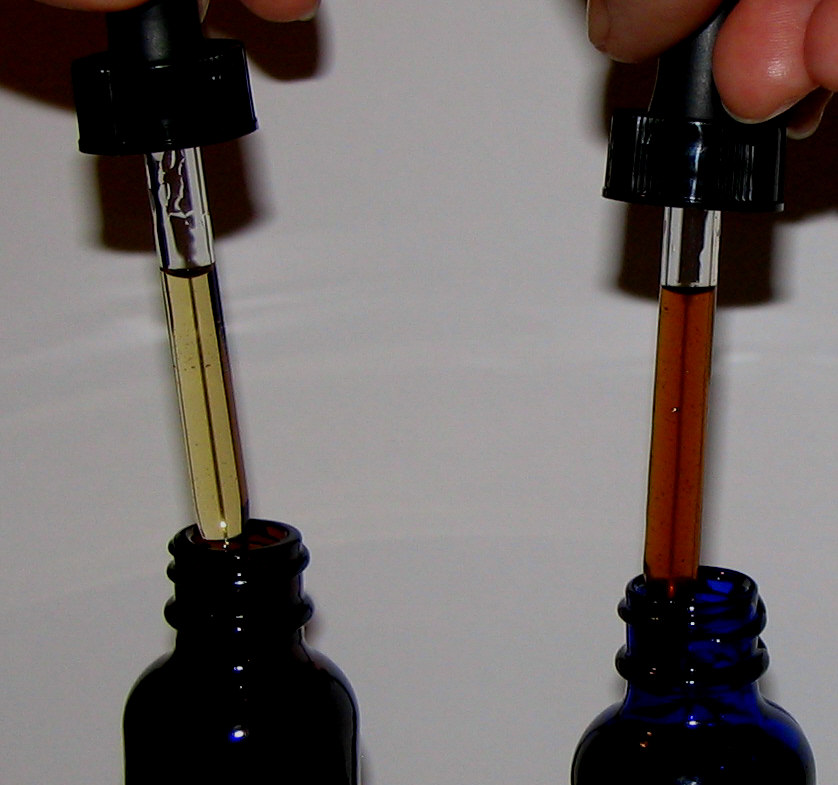 Cold press 60 days Hot versus cold extraction
Cold press 60 days Hot versus cold extraction



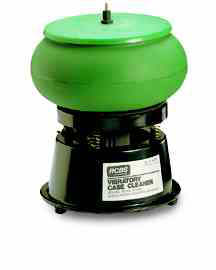
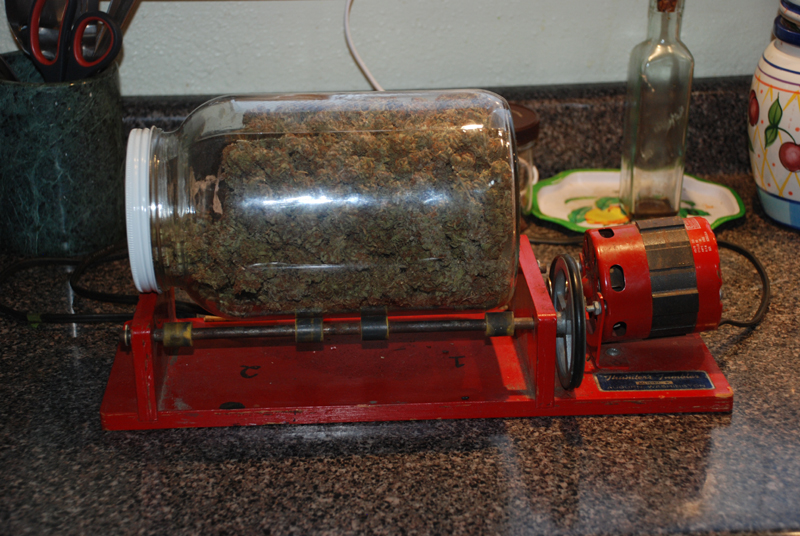
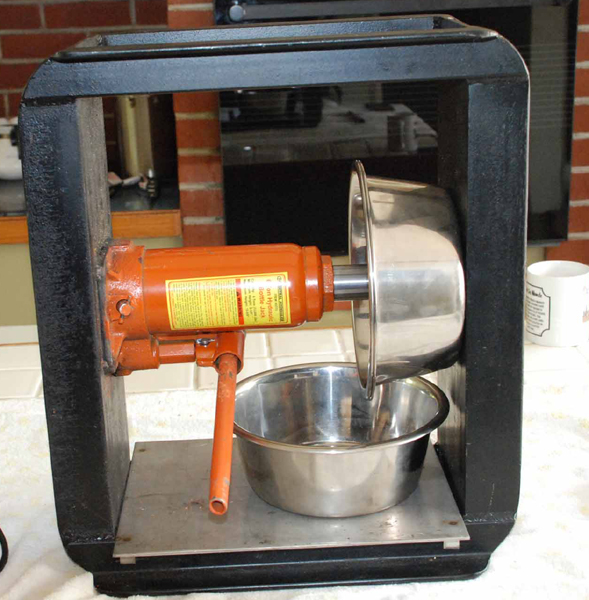
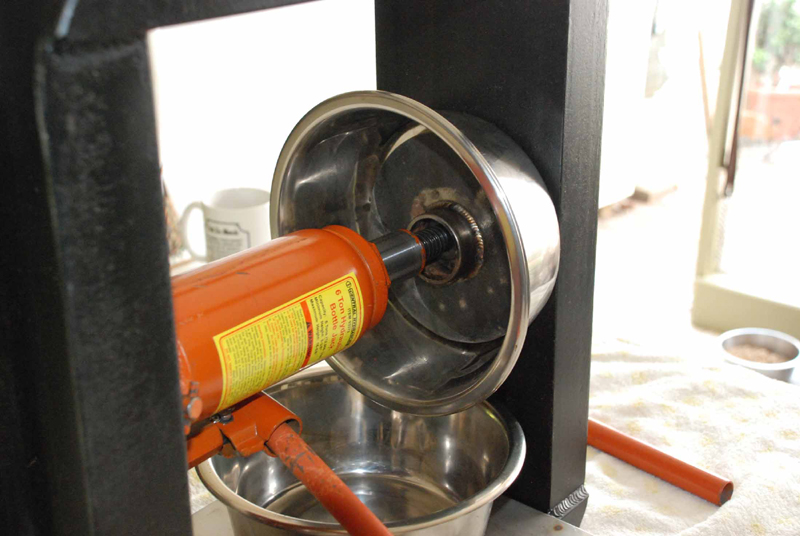
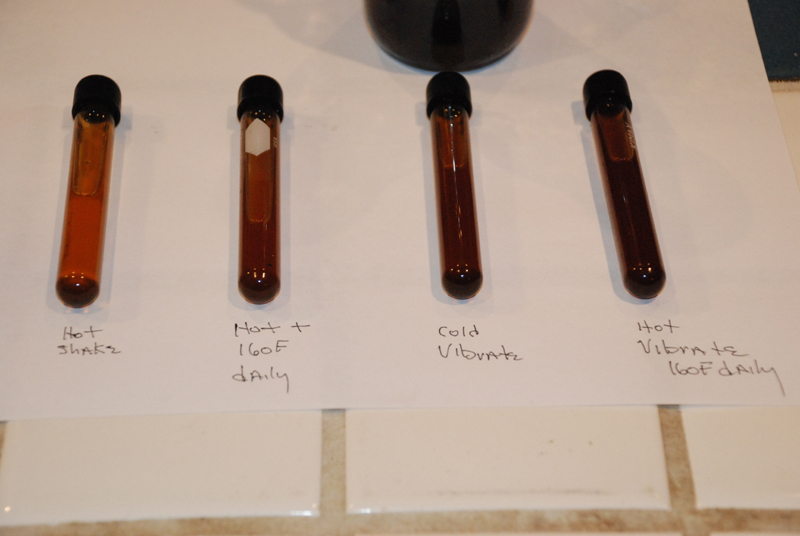
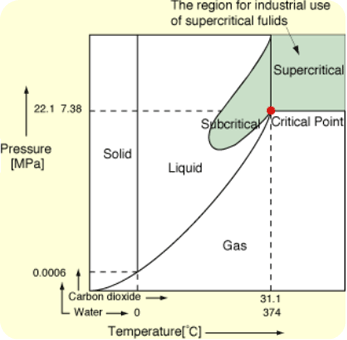
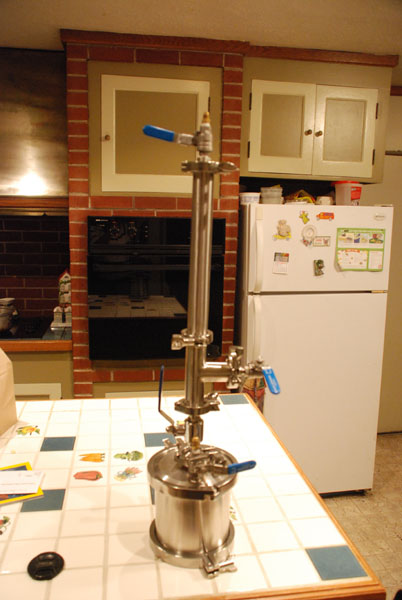
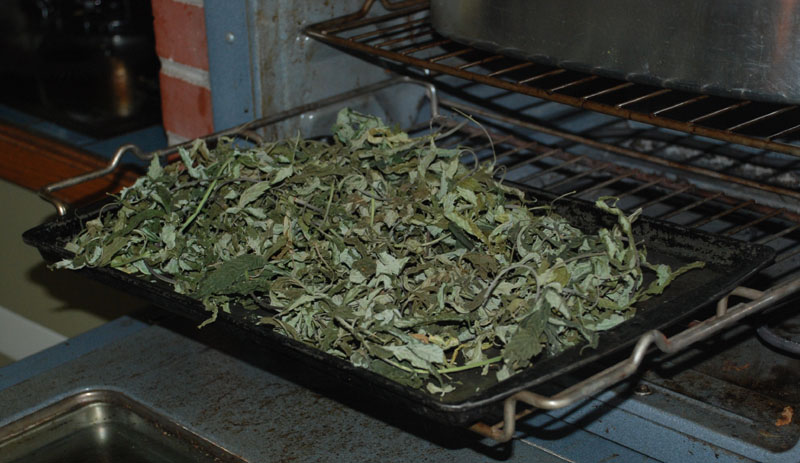
You mentioned that the more saturated the solvents the less it can extract. I too purchased the mighty fast. The recipe they have is 1oz herb to 16 oz vg. It sounded a little weak. But they also claimed that you could strain off the vg, add fresh herbs and do another cycle to make it stronger. After reading some of your responses, I'm feeling that their claims are straight up false advertising ? I don't want a one or two hit wonder, just looking to take the edge off of my PTSD. And a light daytime vape. Would the 1oz per 16oz do that??
I have some high CDB kief and would like to make a glycerin tinct for a friend with MS. Any suggestions as to a ratio Kief/Glycerin? Also, best extraction method using kief??
ive been following the recipe for glycerin-hot method. i signed up to read the answers to everyones questions. is it not avail?
andrew February 06, 2017 at 2:59 AM yes - using this it's easy as and supurb results - used vg/pg 50/50 mix from vape shop, 1 oz herbs, flavouring - https://magicalbutter.com/ Andrew, have a MB2 and LOVE IT. What do you recommend for temp/time? Wondering what temps and settings you ran it at? for example 160 and 2 hour?) Also, 2 cups total? or more - with 1 oz herbs? How is the consistency of the eliquid holding together 2 days later? Which filter did you use to strain? Thanks! Lost Bear
When you say cool dark place do you mean paper bag in refrigerator or in a basement that is more like 65 degrees?
Did anyone tested VG or PG glycerine extraction with ultrasonic assistance? It seems more efficient for ejuice. And what about glycerine with ultrasound extract mixed with concentrate oil? You could have the taste from cold ultrasound glycerine technic that preserve terpens and potency from concentrate? Like this: https://www.hielscher.com/preparation-of-cannabis-glycerin-extract-with-ultrasonics.htm Thanks Alex
decarboxylation I can't spell
How do I decarboxolate after I extract? Does the hot cook process decarb add it cooks?
Newbie here . I have been making Tincture for three years now and have using the hot extraction method for a year now. I have upgraded to a 22 quart Oster cooker and I use 3 gallons of Canola surrounding 3 quart jars filled with VG ,whole buds , trim , and past squeezed/pressed pucks. My question is .... I get my oil to 180 F ( holding at that temp ) and my jars do not get much above 160 F. This doesn't make sense to me !
Could I add flavored gello to the cold process by just putting the powder in her with glycerin?
How can an ejuice that works be made then? Connoisseur concentrates makes a solution that claims .3ml to 1gram concentrates. Holy terp makes pure, same. Which would presumably make a more potent ejuice than 1:1 liquidizers. Are terps any safer to vape than pg or peg? Does that e juice work? Seems No one is looking for the answers but consumers. Also if the concentrated isn't decarbed how can an ecig decarb it? It's not 400 deg like a flower vape is it? I plan to make 1g dry ice hash, then decarboxilate it. Then add CC .3ml. If it doesn't work last try. I've used wax liquidizer 2 times. But pg peg scares me. And it only kinda worked. More like if you were already lifted it would easily keep you up. But wouldn't really Lift you up on it's own. Hope Someone figures it out.
Maybe try forming the "deep eutectic solvent" glyceline by mixing 1 mole of choline chloride or trimethylglycine with 2 moles of glycerol and heating/stirring for about 2 hours at about 80 C until a clear liquid is formed. It will be less viscous than glycerol and its solvent powers will be increased dramatically, like an extraction requiring less than 2 hours rather than days or months. It would be hard to recover the cannabinoids from the DES, other than by adding a lot of water, but it could be used as it, since choline chloride or trimethylglycine are non-toxic like glycerol. In fact it would probably aid in absorption. The deep eutectic solvents are similar to DMSO as solvents, polar aprotic. Adding water at 10-30% reduces polarity and makes it work better for most extractions. BTW menthol forms DES at room temperature with camphor and other substances, including various organic acids, lactic, pyruvic, lauric etc. I think a DES could be formed between menthol and THCA, making it a liquid at rt and more absorbable. Don't know if liquid THCA would be desirable or not, but should be possible at least. May have more medical benefit.
If I do glycerin extraction using cold maceration for a week then, I want to centrifuge it. so, what suitable temperature and rpm should I use?
[…] More reading: https://skunkpharmresearch.com/glycerin-extraction/ […]
I've had my VG?Flower mix sitting(shake twice daily) for 90days now. However,I failed to decard flower prior to mixing. Plan to sit an additional 90 days. Do I have to decarb or activate with an additional step or steps? If so do I perform a hot oil bath or what? answer is greatly appreciated. Will decard next batch prior to mixing.
[…] More reading: https://skunkpharmresearch.com/glycerin-extraction/ […]
Shelf life is definitely limited. Iv had hot extracts that knocked your head of with 10 drops. Few weeks later, not so much. 2 months later, nada. Cannabinoid degradation is a study i would love tof read one day.
Good for baking? I had a ton and just baked up a batch with 125ml of glycerin tinc. Figured some may vape off at low temp. So again, is it a feasible option for brownies? What should I try for dosage?
You can cook with it. One problem to keep in mind with medibles is always the question of how many they are going to eat, which can change from planned if they are tasty and their will is weak. Determining dosage accurately would require analyzing it for THC content. WA state allows 10 mg THC per dose and 10 doses per package. GC
Thank you for this wonderful article! I have a question regarding THC extraction. Is THC able to be extracted with glycerin or ethanol? I ask because I read that THC is oil-soluble so I have always wondered how people extract the THC for (let's say) fruit juice. I have never tasted alcohol and felt glycerin would contribute a thickness to the finished product. I just don't see how an average joe is extracting enough THC without an oil-soluble medium. Thanks in advance!!
THC is soluble in Fats and alcohols. The quote below gives you a brief description of why THC is soluble in Glycerin(because the fatty acid molecules are bound to carbon atoms in the Glycerin Molecule). Im assuming the same fatty acid molecules are found in other oils as well. For example One reason people use Coconut oil as opposed to canola oil is because of the fatty content of it. Compared to say vegetable oil which is at a liquid state at room temperature, coconut oil is a solid at room temp because of the fat content. "The carboxyl end of each fatty acid reacts with the hydroxyl group on each carbon atom of a glycerin molecule. This results in each fatty acid molecule being bound to a carbon atom in the glycerin molecule". In regards to your THC in fruit juice question--> Glycerin is water soluble. So once the THC is extracted (must be decarboxylated as well) into the fatty molecules of Glycerin, it can be directly added to anything like a juice or tea, as well as cooked with for most sweet recipes (I.E Gummies) Hope this helps brotha! Happy early 4/20, keep it hippppie!
Great article and research! Thanks for sharing. Regarding the Hot glycerin extraction, are there any benefits of doing this on the stove with oil (vegi oil I assume) vs the crock pot (wash cloth on bottom, jar on top then half filled water) for 24 hrs shaking every hr? Also if you had to pick a setting of simmer 185F or I could use warm setting 165F which would work better? really appreciate it =)
The reason people use Vegetable Oil baths is because it more stable in regards to keeping temperature. The reason they say to heat to at least 180F is because this is the point at which cannabinoids become molten and are more easily/more quickly soluble. From my research I have found most people use a range of 180-220F when using the heating method for tinctures. I think the crockpot method would be fine, the only reason they use vegetable oil is solely for the stability compared to water! One plus of the stove top is that if you have a thermometer it is much more easy to keep the temperature where you want it :)
Thanks! Any idea how long the shelf- life before it starts to degrade? Is it true after a month? Made a bunch with your method above 50%/30%/8%/12% vg/pg/distilledwater/flavoring for vaping, came out great! Not sure how long it will last storing it though ;D
Is decarb-ing necessary if vaping? Sorry if this seems like a silly question.
No, but extracting with VG doesn't produce a very exciting vape solution due to low concentration. GW
you said... "You can reduce the alcohol sting, by simply removing most of it. 50% concentrate in 50% 190 proof, cuts the alcohol potency in half." i use 2 ml tincture daily and cutting the burn would be such a blessing. i dont want to use heat to remove grain alcohol but i need to stay with 190 proof due to cost [cant afford three times as much just for good taste]. thank you in advance for your more detailed clarification of how to reduce alcohol sting... we all thank you.
You can naturally evaporate some of the alcohol away without heat, if you want less. 75% concentrate and 25% 190 proof is below sipping whiskey levels and about in the brandy range. Pour it in a pyrex pie plate, cover with a cloth to keep dust out, and the alcohol will leave all on its own. GW
Ive tried it exactly as you have suggesting atleast 10x. Maybe more!!! It simply does not work. I have decarbed before and after. I have tried 180, 190 and 200+ all different runs. I have tried it all! The VG absorbs some THC but it is very very little and comes across as more of a sleep-aid than anything. (and its not even good sleep aid).... I have tried cooking in veg oil and water. Nothing. crock potting/longer runs...No dice. Same ol weak garbage. VG is just too poor of a solvent to make this happen.
Make what happen?? There are brothers and sisters who have been using glycerin tincture for more than a decade since I've been aware of it and swear by it. The question is how are you using it and what effects are you looking for??? If you are looking for pipe juice or a soaring euphoric high, you will be disappointed. The pipe juice won't be potent enough and your liver processes what you take orally and most test volunteers reported the effects as more of a feeling of relaxed well being. As far as a sleep aid, the right strain and dosage certainly could be. GW
A friend of mine has given me gummies/gum drops on a number of occasions. They are out of the world potent! Consistent as well in the dosing....... Extremely heady and energetic. I was convinced they were made with VG. Now after a number of trials i am thinking otherwise. If you can't make VG euphorically(is that a word) potent what in the hell is the baker making these gummies with ??? *They are delicious as well.
Recipes vary, but he is most likely adding concentrate to his gummy bear mix. Here is a generic one from Wiki. The gelatin in the recipe will act as a menstruum for the concentrate. Except for the lozenges and cannapops, we backed off of making tasty medibles, because of the number of patients whom "couldn't eat just one", or two or three........, and ended up overdosing. Not life threatening, but definitely fun threatening, so except for the prestige, is a good thang to avoid. GW
I thank you for your response.... I know I am off topic now but could you provide a link or explain how one would dissolve wax into the gelatin. Just liquify the wax under heat and mix ? or add to a lipid or ? Last question i promise :)
For gummy bears Coconut Oil seems to work as better menstruum than gelatin. For folks who do processing, one of the biggest challenges with edibles, beverages, topicals, tinctures, etc is potency drift. We talked a client of ours, Neta Care, in Massachusetts into performing some potency analysis with their BHO extract Gummy Bears. They made two batches of gummy bears with coconut oil as the carrier. One batch was mixed with an industrial immersion mixer for one hour, the other batch was emulsified with the CAT X1000D homogenizer for one minute. Each batch made 50 gummy bears. 25 gummy bears from each batch were randomly selected and analyzed for potency deviation. The batch mixed with the industrial mixer for an hour, potency deviation of 65%. The batch emulsified with the homogenizer for one minute, potency deviation of 4%. Unfortunately, Neta Care is unwilling to share the analysis. They’re afraid if this information gets out to other processors they’ll lose the edge they have in the market. We are working with other processors who promise they'll share their potency deviation analysis. As soon as they make them available I'll post them. Steve, CAT Scientific
Because VG doesn't reduce, you can't use it for gummy bears. I use an alcohol tincture (151 or 190 proof). And reduce it down (like molasses). Obviously don't do this over an open flame. Take 2 1/2 ounces (10 envelopes of 1/4g each) unflavored gelatin Mix with 12 oz of flavored gelatin to combine. Mix 1 cup of chilled fruit juice of your choice with 1/4 of honey or agave nectar. Then add the juice & agave to gelatin and whisk. Let sit for 20 minutes. After you reduce the tincture and almost all alcohol has evaporated, add 1/2 tbsp of flavor extract and 2tbsp of honey or agave to the pan. Swirl until it looks like molasses. Add the gelatin mixture to the pan, heat over medium until gelatin has melted. Pour into molds. You can dust them with powdered sugar after you pop em out to keep from being sticky. I've been following this recipe for years that hasn't steered me wrong, firms up in about an hour. Yields about 3.5-4 c of gelatin slurry. Fills my molds to make about 350 bears. Hope this works out for you.
Ok that is what I thought. Thank you for your quick reply. One other question, is there anyway to tell if all of the cabinoids of have been extracted?
100% of the cannabinoids are in the trichomes. I judge when I have fully extracted material by looking for intact trichome heads under 100X magnification. When they're gone, I'm done. Don't worry about the stems, they will remain after the heads are gone. GW
Regarding the hot method, you mention the cold method will fail to extract all the cabinoids from the plant and you need to repeat the method to get full potential strength. Is this the same for the hot method? Or does the thermal cycle take care of this?
VG is not an aggressive solvent, and I reprocess the hot run left over remains as well. GW
what about using only PG or a mixture of PG/VG?
I've never tried extracting with PG, but ostensibly it would work. GW
Thanks, it seems to be going well so far! I guess we won't know until the final step. I love the website, I just came across it recently. Any good links on knowledge for a first time grow? Thanks again!
You're welcome! Bon appetite! I'll let Joe and Carla answer the grow question, as it is in their areas of expertise! GW
I'm just trying this for the first time. I have steam heat in my house and I am storing it near my radiator. Do you expect this to be helpful, harmful or have no effect?
Heat will speed up the extraction, but may influence the flavor. GW
I think it will work and the end result will be a faster extraction. The difference between a long cold extraction and a short hot one, is flavor. Cold extractions are like wild honey, in that the flavors dart off in all directions, because of the local mix of blossoms, while hot extractions are more like the flavor of a tasty soup combining them. GW
Pls don't bother. It simply will not work. Everyone reading this should give up on both pg and vg. It simply is not potent enough so don't waste your time. I know it's a great idea but it's only an idea. Someone should tell Ruffhouse to take down that video. It's super misleading. Utter BS even! Someone should post on the original post about this and stop wasting time of others. I'm glad I did it so I know how futile it is. Don't say I did not tell you beforehand!
May I ask to whom you speak? GW
You mention decarboxylating the extract after its made...how would one go about doing that.
I infer that you are speaking of a Vegetable Glycerine extract. For cold extract purists/aficionados, storing it a year in a cool dark place will do the trick and preserve the wild honey flavors. If you are in a hurry, stick a stainless container of the VG tincture in a 250F oil bath and watch the bubbles. Keep stirred so you can tell what is going on and when the CO2 bubble generation falls off suddenly, you are at about 70% decarboxylation and when it stops, you are at 100% decarboxylation. VG flash point is 160C/320F and the boiling point is 290C/554F, so is unaffected at 121C/250F. GC
Yes I'm referring to a VG tincture I made but forgot to decarboxylare the material prior to mixing it with the VG so I will try this method. Thanks
The decarboxylation at 180F after it's been made seems a good choice over the oven method. I seem to think I need to know how long to maintain that temperature. Would you care to elaborate?
I would recommend hotter and faster. Here is the graph:https://skunkpharmresearch.com/decarboxylation/ Normally I would say watch the bubbles to tell exactly what is going on, but at 180F the activity is slow and less obvious. GW
If i Wanted to use Cannabis oil instead of flower as my material. Would you recommend emulsifying the cannabis oil in ethanol alcohol and then adding it to the vg to make it mix in well? What would be your best way of going about making it with decarbed cannabis oil? Thanks
Even mixing it with ethanol to facilitate mixing, some of the constituents will still precipitate out of solution, so the best way we've found to maximize cannabis essential oil suspension in VG, is to emulsify it. https://skunkpharmresearch.com/game-changer-emulsifying-vegetable-glycerin-and-bho-for-e-juice/ GW
Defintely skip the EJmix or anything comparable. All garbage imo. Iv tried it all and using the one set of lungs we are given to test vaped plastic is not where its at. Flavrx makes a GSC cart that hits harder then anything Iv ever had. Its a terpene infused distillate that is highly effective after 1 low voltage (3.7) hit. Aside from that, dont waste countless grams of extract trying it at home unless you have an endless low cost supply.
I'm from the UK so can't get any pre made cartridges in the uk :/.
The internet can be a powerful tool for furthing ones knowledge prior to asking questions. QWET- Quick Wash EThanol SCFE- Sub Critical Fluid Extraction CO2 - Carbon Dioxcide GW- The one and only graywolf OG!!!
*Supercritical ROI- Return on investment. Isotoke
Thank you very much. Wat would you say is the best way to make a potent thc e liquid? Thanks again
Start with a pure extract in the form mentioned above and then add either an emulsifier like EjMix or get pure monoterpenes to reduce viscosity (make it thinner). EjMix does have something of a plastic taste especially if used at higher ratios than 1:1. Monoterpenes are expensive and will give your juice a citrus or pine flavor. There are products out there that use a mix of terpenes and claim to replicate well known strains. That's the only way I know to get truly potent ejuice from cannabis
SCFE could also be Super Critical Fluid Extraction. The world is probably isn't ready for another Tattered Old Graywolf, but GW could also be GW Pharmaceutical! LD-50 Rat means 50% of the rats died at that dosage and PEL means Permitted Exposure Limit. TLV is Threshold Limit Value and OW means Oh Wow, with OMG meaning Oh My Gawd! GW
What do those abbreviations mean? Sotry if it's a silly question I'm still trying to get to grips with all this.
Could you be more specific? GW
So wat is it best to do e juice with alcohol??
It can be made a number of different ways, some more expensive than others. A denatured QWET is a less expensive way to make one from ground zero, and probably SCFE CO2 the other end of the scale, requiring more volume to achieve an attractive ROI. GW
What do these abbreviations means? Sorry if it's a silly question just I'm still trying to get to grips with all this.